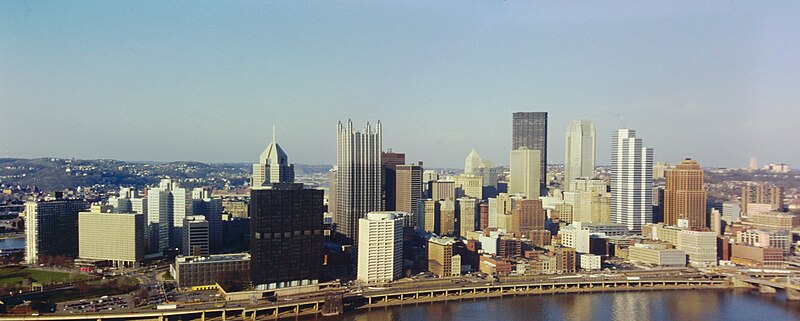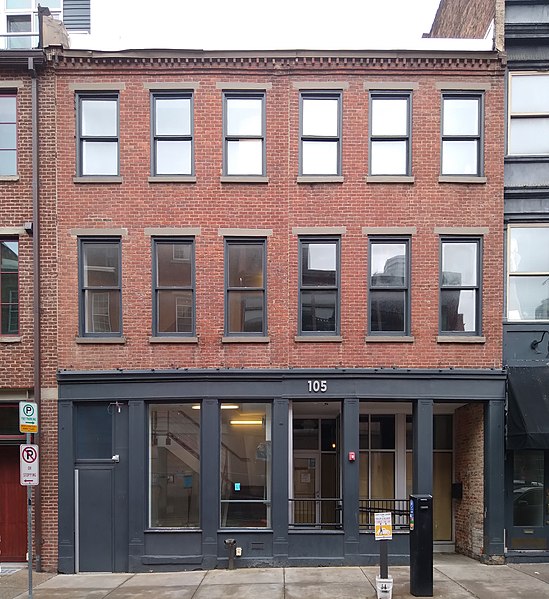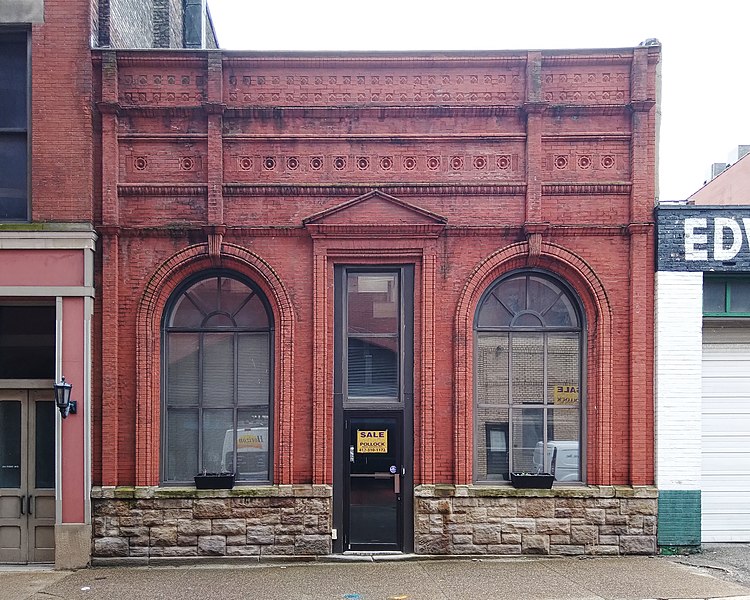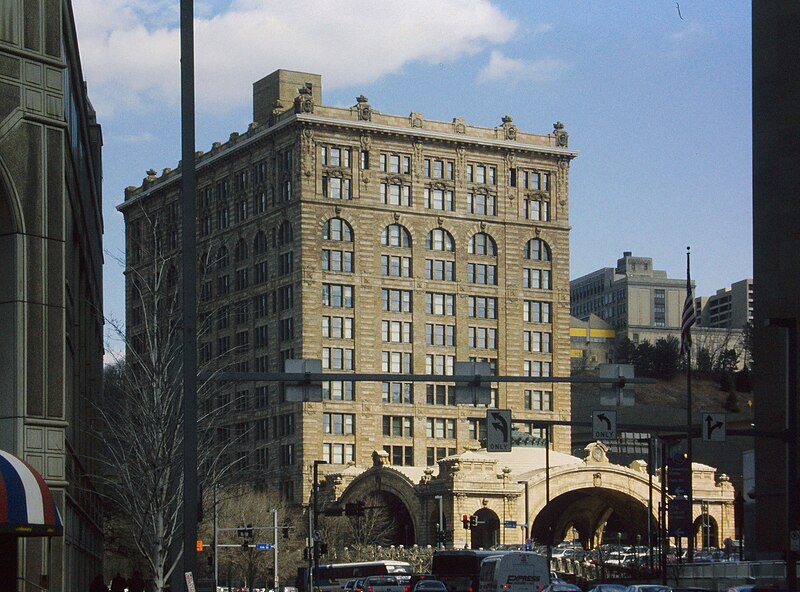
Father Pitt is not quite sure when he took this picture (some of his records are in a sorry state of disorganization), but it is easy to give it a rough date. In the middle distance we can see the Farmers Bank Building, with its mural of Pittsburgh sports legends by Judy Penzer, an artist who had the good luck to be the sister of a real-estate developer, and the bad luck to be on TWA Flight 800 when it exploded in 1996. That mural was painted in 1992, and the building was imploded in 1997 to make way for the new Lazarus department store.
The Farmers Bank Building was a great loss to our architectural legacy, but we could argue that it had been lost for three decades by the time it was demolished. It was built in 1903, one of our earliest batch of skyscrapers.

In the 1960s, the owners covered the embarrassingly passé Beaux-Arts exterior with a generic modernist shell, making the building indistinguishable from other International Style boxes except for being uglier. When the building was scheduled for demolition, there was some argument about whether the original exterior could be restored; but the indomitably bland personality of Mayor Murphy overcame all opposition to his project to fill downtown with department stores. Tom Murphy was a brilliant politician, probably the most powerful mayor since David Lawrence, but in this case he was badly misguided. Lazarus failed in a few years, and soon downtown went from four department stores to none at all.










